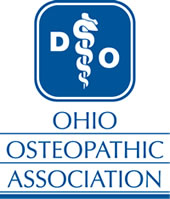For the Public
Patient Resources
Every Patient Counts
America's health care system is in crisis. In communities nationwide, citizens are losing access to quality medical care, and no one is immune. Before our health care system flatlines, we must take action to ensure that our lawmakers know Every Patient Counts.
Cancer Survivorship Resource Guide
The Ohio Osteopathic Association is a member of Partners for Cancer Control, which is a statewide coalition of organizations working to reduce the burden of cancer among Ohioans. For information and additional cancer resources visit the coalition's website at https://ohiocancerpartners.org/
Consumer Health Choices
Consumer Health Choices is where you can find free Consumer Reports resources for patients and their families.
- More than 100 Choosing Wisely brochures about overused imaging, tests, drugs and procedures.
- Dozens of Best Buy Drugs reports, identifying the safest, most cost-effective choices at the drugstore.
- Research from the Consumer Reports Health Ratings Center.
- Reprints of important Consumer Reports magazine articles on being a smart healthcare consumer.
- Details about the healthcare campaigns they've launched or joined.
- Resources for health professionals who distribute information to their patients.
- Resources for employers who offer health guides to their employees.
Ohio Patient Safety Institute
Jointly established in 2000 by the Ohio Osteopathic Association, Ohio Hospital Association (OHA) and Ohio State Medical Association (OSMA), OPSI has collaborated on multiple initiatives to help health care organizations improve the safety of their patients.
National Cancer Institute
The National Cancer Institute has a new, reliable source for risk information about six common cancers, steps to reduce risk, tips for understanding cancer news stories, and tools to use with doctors to manage cancer risk. Find the site at http://www.cancer.gov/.
Ohio Tobacco Quit Line
The Quit Line is designed for people who are ready to quit using tobacco, and people who want to make sure they have the support and the motivation to stay tobacco-free. When you call and enroll, you’re paired with an experienced quit specialist who will work with you to set a quit date and design a quit plan customized to your pattern of tobacco use.
.
Advance Directives and End of Life Planning
The decisions a person makes regarding their healthcare preferences and treatment wishes at the end of life are extremely important. As a result, the Midwest Care Alliance (formerly the Ohio Hospice and Palliative Care Organization), in collaboration with the Ohio State Bar Association, the Ohio Hospital Association, the Ohio Osteopathic Association and the Ohio State Medical Association have published two documents to help patients have discussions and complete forms on how to deal with life threatening situations when a patient cannot speak for him/herself.
Conversations That Light the Way is a workbook designed to assist you in making choices about the kind of health care you want as you journey through the final phases of life. Although this subject can be uncomfortable for many people to address, it is important that each person has the opportunity to make these important choices for themselves. The workbook contains questions, prompts and information designed to help you consider and discuss choices at the end of life. You may want to revisit this workbook over the years as these conversations take time and your decisions and choices may change.
Important Notice:
The Ohio General Assembly passed House Bill 126 in December 2013,to allow the appointment of a guardian to be made through a healthcare power of attorney. The change required amending Ohio's advance directives documents to conform to the new law. The new documents, finalized March 19, 2015, can be downloaded as a PDF and printed by clicking here: Ohio Advance Directives 2015
Ohio Legal Services offers a self-guided interview to prepare your personalized Ohio Advance Directive on line. A new Spanish version is also available. To utilize this tool, click here.
For additional information, see the articles below and visit these sites:
More Resources and Information
It's Never too Early to Start Your End-of-Life Planningby John C. Wolf, DOThe natural consequence of being born is death. Most of us will have at least some advanced warning before we die from diseases such as heart disease or cancer. Some of us will die suddenly and unexpectedly. It's never too early to start end of life planning. Details > | Bringing Cultural and Spiritual Sensitivity to End-of-Life CareThe ethnic, cultural, and religious diversity that gives America its own unique background is also adding a new dimension to the special needs that healthcare practitioners must address when providing end-of-life care to members of these different communities. Details > |
Managing Pain Effectively to Assure Quality of Life at End of LifeEffectively managing the physical pain associated with terminal illness does not extend a dying person's life. However, lessening that pain can enhance the quality of life at the end of life by enabling people to coherently discuss a child's future, put their affairs in order, or perhaps even visit a special place one last time. Details > | Osteopathic Manipulative Treatment for PainOMT is effective as an adjunctive therapy to help control and ease somatic pain that many people suffer from during the final stages of life. Somatic pain includes that of the muscles, skin, bone, and other soft tissues. Details > |
Osteopathic Medicine and End-of-Life CareAs the average life expectancy in the US increases and the number of older Americans continues to rise, more and more adults, their families, and healthcare professionals are addressing the many issues and decisions surrounding "end-of-life" care and support. Details > | Selecting and Financing End-of-Life Care ProgramsTypically, hospice care at the end of life is covered by Medicare, Medicaid, most private insurance companies, and managed care organizations. Community contributions, memorial donations, and other gifts often make free care possible for patients without sufficient funds, and some programs charge patients according to their ability to pay. Details > |



